Does dry eye disease lead to blindness?
Dry eye disease is more than just an occasional irritation. It’s a common condition that can significantly impact your vision and daily life. Many people have dry eye symptoms like blurry vision and a gritty sensation. However, most people don’t realize there are potential risks to leaving dry eye untreated. But can dry eye cause blindness?
While dry eye itself doesn’t directly cause blindness, chronic cases can result in corneal damage, infections, and vision impairment. Mild dry eye is common. It’s the severe cases that can lead to vision-threatening complications.1 We want to help you understand the risks and the many treatment options that can help protect your long-term eye health.
Key Points
- Dry eye disease can cause blurry vision, discomfort, and potential long-term damage to the cornea if left untreated.1
- While it doesn’t directly cause blindness, severe cases of dry eye disease can lead to infections, corneal ulcers, and significant vision loss.1
- Proper treatment and simple lifestyle changes can help manage and prevent complications of dry eye disease.
What Is Dry Eye Disease?
Dry eye disease occurs when your eyes either don’t produce enough natural tears or the tear quality is poor. You need tears to keep your eyes hydrated, clear, and protected. A healthy tear film has three layers: the oily layer (produced by the meibomian glands), the watery layer (from the lacrimal glands), and the mucous layer (which helps tears spread evenly). If any layer is disrupted, tear production suffers. This leads to eye dryness and discomfort.2
Dry eye disease affects millions of adults in the U.S. and is one of the most common eye conditions seen by eye doctors.3
Symptoms of Dry Eye
Like many people, you might dismiss your dry eye symptoms as minor annoyances. But if your symptoms never seem to go away, it can indicate a more serious condition. Consider these common symptoms of dry eye disease:2
- Blurry vision and fluctuating vision
- A gritty sensation, as if something is stuck in your eye
- A stinging sensation or burning feeling
- Increased light sensitivity
- Eye fatigue, particularly after prolonged screen time
- Redness and inflammation
- Stringy mucus around the eyelids or lid margin
- Cloudy vision and difficulty focusing
If you notice these symptoms frequently, make an appointment to visit an eye doctor to keep it from getting worse.
Causes of Dry Eye
These are several factors that can contribute to dry eye disease, and they range from environmental conditions to underlying medical issues.
Environmental factors
Everyday surroundings can affect tear production and tear quality. Digital screens are a major culprit. Did you notice that prolonged screen time reduces blinking? Studies show that people blink 60% less when staring at screens. Less blinking can cause your tears to evaporate too quickly.4
Dry, windy, or smoky environments can also disrupt the natural tear film. Your contact lenses may also lead to dryness of the eye if worn for extended periods without breaks.1
Medical conditions
Several medical conditions are linked to dry eye disease. Autoimmune disorders like Sjögren’s syndrome affect the production of tears. Meibomian gland dysfunction (MGD) prevents the oil glands in the eyelids from secreting enough oil to keep tears stable, leading to rapid evaporation. Blood pressure medications, antihistamines, and antidepressants may also interfere with healthy tear production and cause dry eye symptoms.2
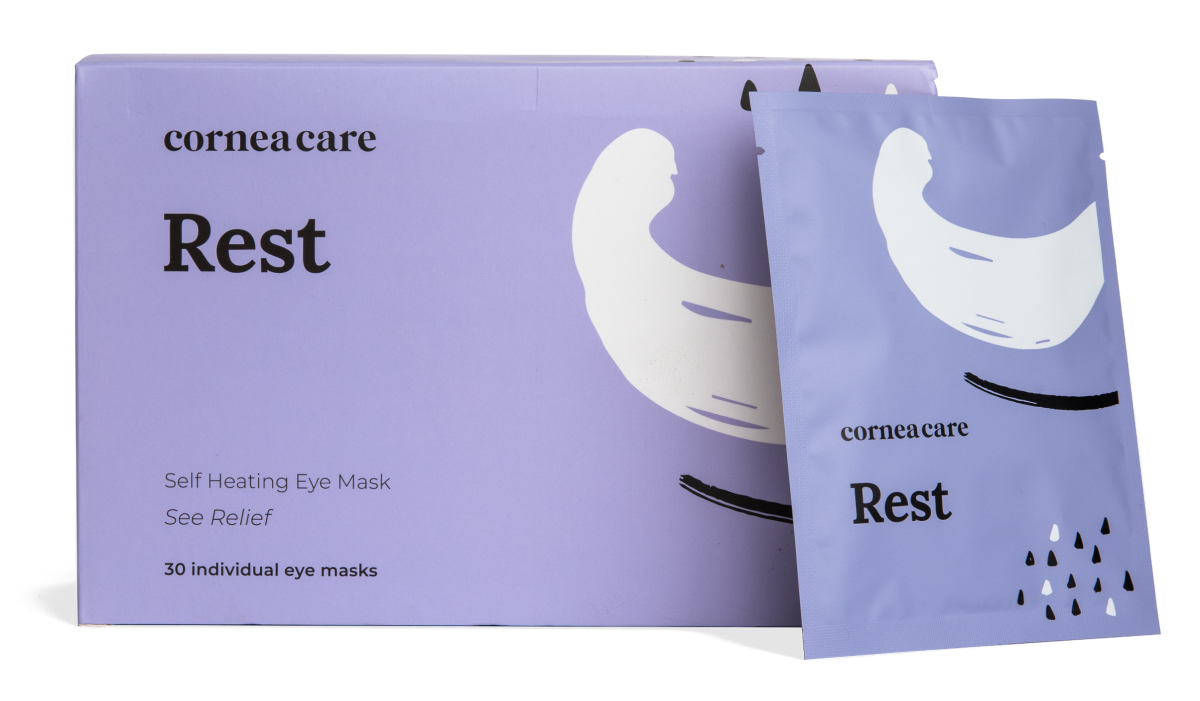
Rest
Warm Compresses
Perfect for eye dryness, fatigue, tearing, and puffiness of the eyelids. Free shipping 📦.
Try today - $30
Risk Factors for Dry Eye Disease
Understanding what increases the likelihood of developing dry eye disease can help you with prevention and management.
Age and gender
Tear production declines with age, making dry eye more common in older adults. Women are also more likely to experience dry eye due to hormonal changes during pregnancy, menopause, or while using birth control.1
Lifestyle choices
Smoking can contribute to eye dryness. People who frequently use digital screens or spend time in air-conditioned environments are at higher risk as well. Your diet also plays a role. A lack of omega-3 fatty acids in your meals can affect tear quality.1
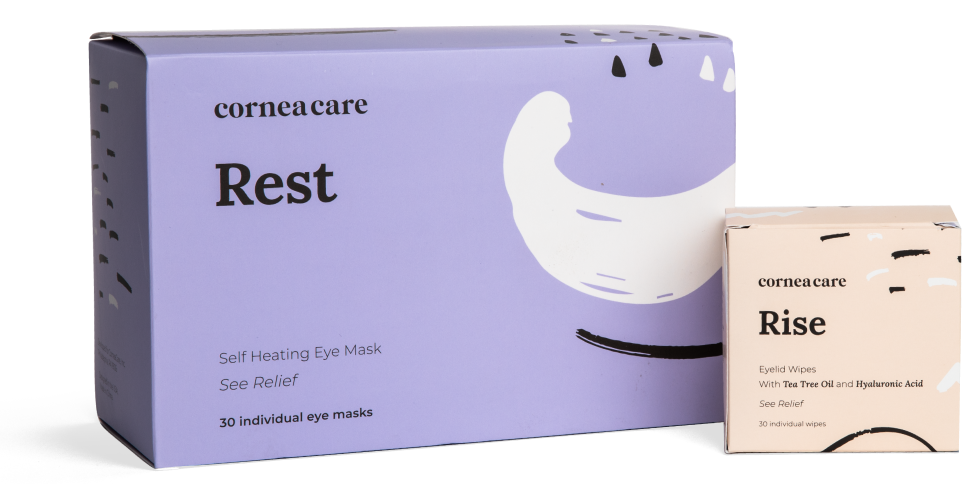
Foundation
Eyelid Hygiene Plan 2
Perfect for eye dryness, burning, itching, crusting/flaking of eyelashes and inflamed eyelids. Free shipping 📦.
Try today - $45
Can Dry Eye Cause Blindness?
While dry eye disease itself doesn’t directly cause blindness, ignoring your symptoms can have serious consequences.5
Short-term vision problems
Dry eye often causes blurred vision and fluctuating vision, which can make daily activities like reading and driving more difficult. Like many people with dry eye disease, you may experience eye fatigue and discomfort, making it hard to concentrate. In severe cases, the poor quality of tears increases the risk of infections, which can lead to other complications.2
Long-term effects
Chronic dry eye can lead to persistent inflammation and damage to the cornea (outer layer of the eye). The cornea is vital for clear vision, and without a stable tear film, it becomes vulnerable to scratches, irritation, and bacterial infections. Poor tear quality can also contribute to corneal ulcers, increasing the risk of vision impairment.2
Permanent eye damage
Severe cases of untreated dry eye can result in corneal scarring and permanent vision loss. Corneal ulcers, which develop when the eye’s surface becomes compromised, can cause significant scarring that distorts vision.2 That’s why treatment is important—protecting your tear film and maintaining eye health prevents long-term complications.
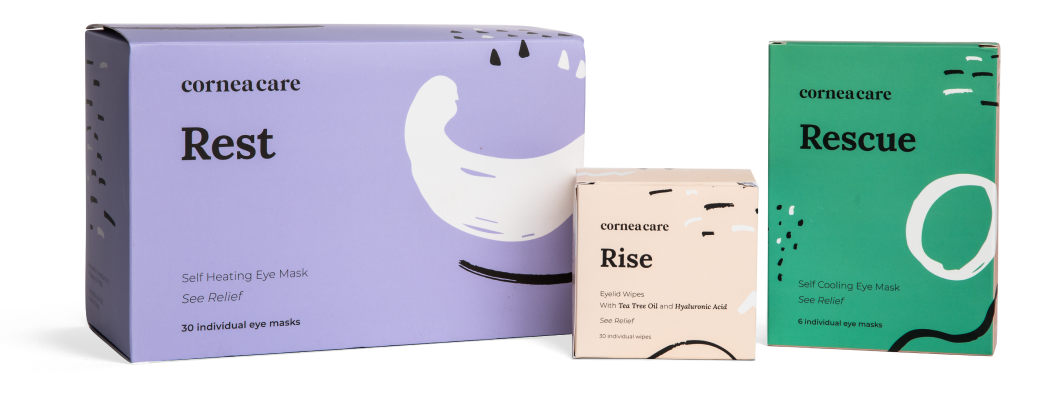
All Rounder
Eyelid Hygiene Plan 3
Perfect for eye dryness, burning, itching, grittiness, crusting/flaking of eyelashes and inflamed/swollen eyelids. Free shipping 📦.
Try today - $60
Preventing Dry Eye Disease
Simple daily habits can help maintain healthy tear production.
Diet and hydration
Drinking enough water and eating a balanced diet rich in omega-3 fatty acids supports natural tear production. Foods like salmon, flaxseeds, and walnuts can improve tear film quality. Adding CorneaCare omega-3 supplements can help fill that nutritional gap.1,2
Protecting your eyes
Reducing screen time and taking frequent breaks can help keep your eyes hydrated. Conscious blinking while using screens helps spread natural tears evenly.2
Running a humidifier in the rooms where you use screens and sleep can make a difference. Wearing sunglasses outdoors shields the eyes from wind and UV exposure, reducing irritation.1
Eyelid care
Making eyelid hygiene part of your daily routine, like brushing your teeth or cleaning your face, can help prevent dry eye symptoms before they start.
- Warm compresses: Applying warmth to the eyelids improves oil flow from the meibomian glands. CorneaCare self-heating warm compresses are soothing to dry eyes.1
- Eyelid hygiene: Cleaning the eyelid margin helps prevent the accumulation of pathogens that can contribute to gland dysfunction.1 Try using conveniently individually wrapped CorneaCare eyelid wipes.
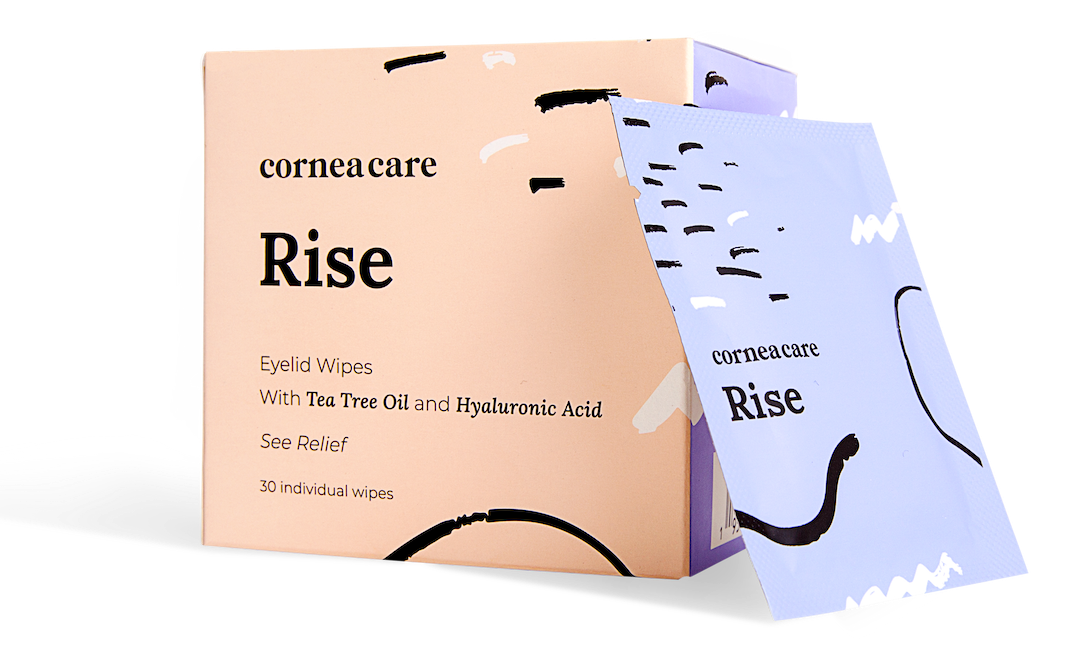
Rise
Eyelid Wipes
Perfect for eye dryness, itching, burning, and crusting/flaking of eyelashes. Free shipping 📦
Try today - $25
Effective Treatment Options
The good news is that dry eye disease can be managed with proper treatment. The best approach depends on the severity of your symptoms and underlying causes.
Always start with a visit to your eye doctor for an accurate diagnosis and treatment plan.
Eyelid hygiene
In addition to preventing dry eyes, eyelid hygiene is also the first step in treating dry eye disease. Regular eyelid cleaning and the use of warm compresses help prevent bacterial buildup, improve oil gland function, and reduce inflammation.1 Try CorneaCare Eyelid Hygiene Foundation which includes eyelid wipes and warm compresses for an easy and convenient solution to dry eye treatment.
Artificial tears and eye drops
Artificial tears can help to maintain moisture in your eyes.2 However, it’s important to address the underlying cause of poor tear quality. CorneaCare preservative-free artificial tears offer soothing relief of dry eye symptoms.
Advanced therapies
For serious cases, your eye doctor may recommend dry eye disease treatments that target the underlying causes of dry eye, including MGD.6
- LipiFlow: Uses gentle heat and pressure to unclog oil glands in the eyelids, improving the oily layer of the tear film.
- Punctual plugs: For those with decreased tear production, punctal plugs can be inserted into the tear ducts to help retain moisture.
- Intense pulsed light (IPL): Reduces inflammation around the eyes and helps restore normal gland function.
- Meibomian gland expression: A manual technique performed in-office to clear blocked oil glands and restore proper tear function.
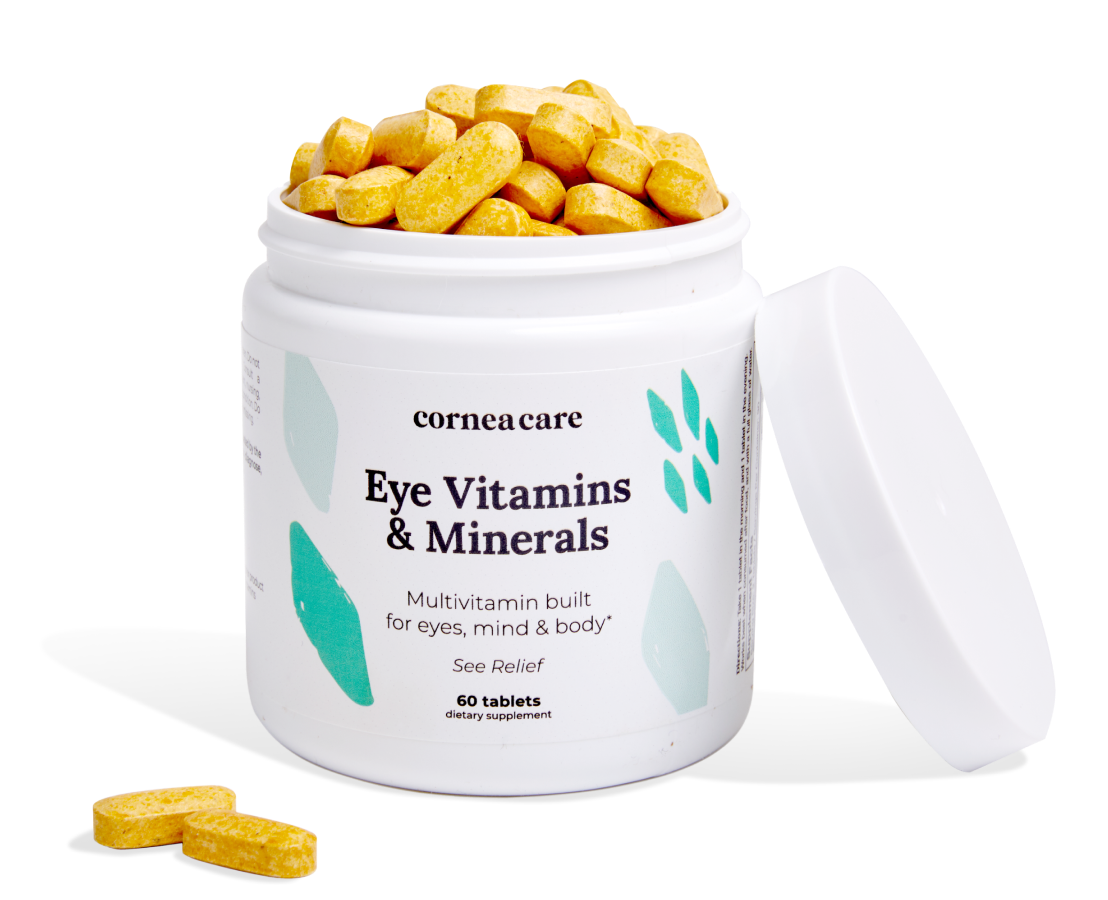
Multivitamin
Eye Vitamins & Minerals
A single multivitamin to address the nutritional needs of your eyes, mind and body. 📦 Free shipping.
Try today - $35
Can Dry Eye Cause Blindness FAQ
Yes, in severe cases of dry eye disease, lack of treatment can cause permanent damage to the cornea, leading to vision impairment. When the eyes lack a stable tear film, the corneal surface becomes vulnerable to inflammation and scarring. While blindness is rare, severe dry eye cases can result in significant vision loss if not properly managed.
There is no absolute cure for chronic dry eye disease, but it can be effectively managed with treatment. Mild cases may improve with eyelid hygiene, artificial tears and lifestyle changes, while moderate to severe cases often require prescription medications like cyclosporine (Restasis) or lifitegrast (Xiidra) to reduce inflammation and improve tear production. Procedures like punctal plugs, LipiFlow, or intense pulsed light (IPL) therapy can also help restore tear film stability. In cases where dry eye is caused by an underlying condition, managing the root cause can significantly reduce symptoms.
Severe dry eye disease causes persistent discomfort and vision problems that can interfere with daily activities. Symptoms include extreme dryness, a burning or stinging sensation, intense redness, sensitivity to light, and a gritty feeling as if something is stuck in the eye. Vision may become blurry or fluctuate due to an unstable tear film, and in some cases, mucus discharge forms around the eyelids. Corneal damage from prolonged dryness can lead to eye pain, frequent infections, and difficulty keeping the eyes open for long periods.
Blindness from dry eye disease is rare, but severe cases can cause significant vision loss over time if left untreated. The progression depends on the underlying cause and severity of dryness. Early intervention can prevent long-term complications and protect vision.
Putting It All Together
Dry eye disease is a common condition that can significantly impact your vision and quality of life. While it doesn’t directly cause blindness, severe cases can lead to corneal damage and permanent vision loss if left untreated. Fortunately, there are effective treatment options available.
Early diagnosis and proper management can protect your eyes for long-term comfort and clarity. If you experience persistent dry eye symptoms, visit an eye care professional to find the best treatment plan for your needs.
What’s Next
If dry eye symptoms are impacting your daily life, learn more about the causes and treatments in our free Dry Eye 101 course!





